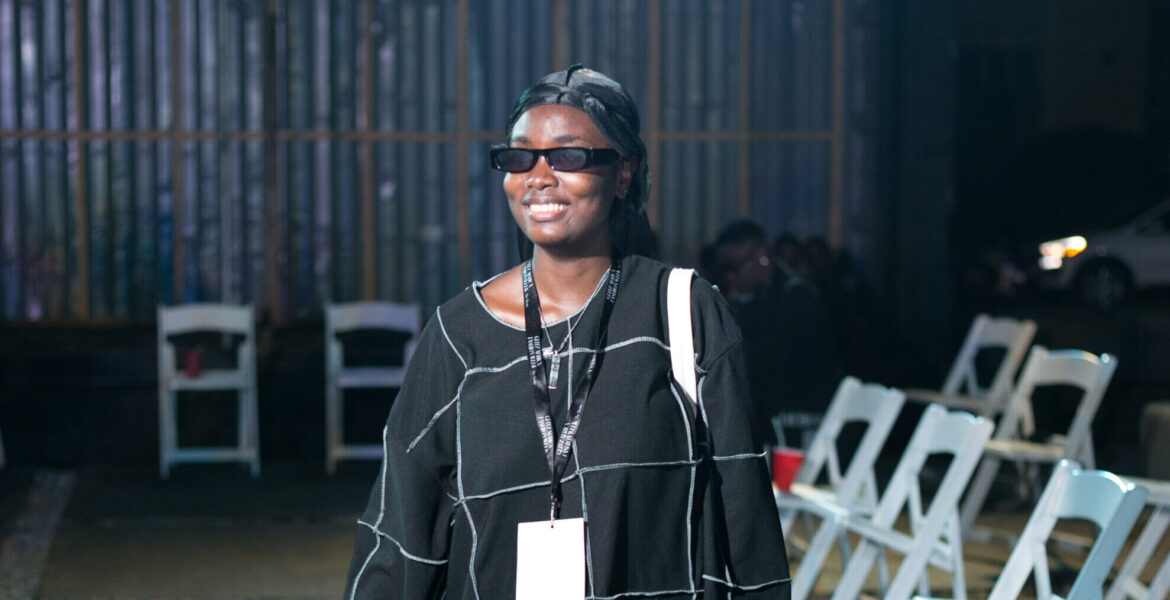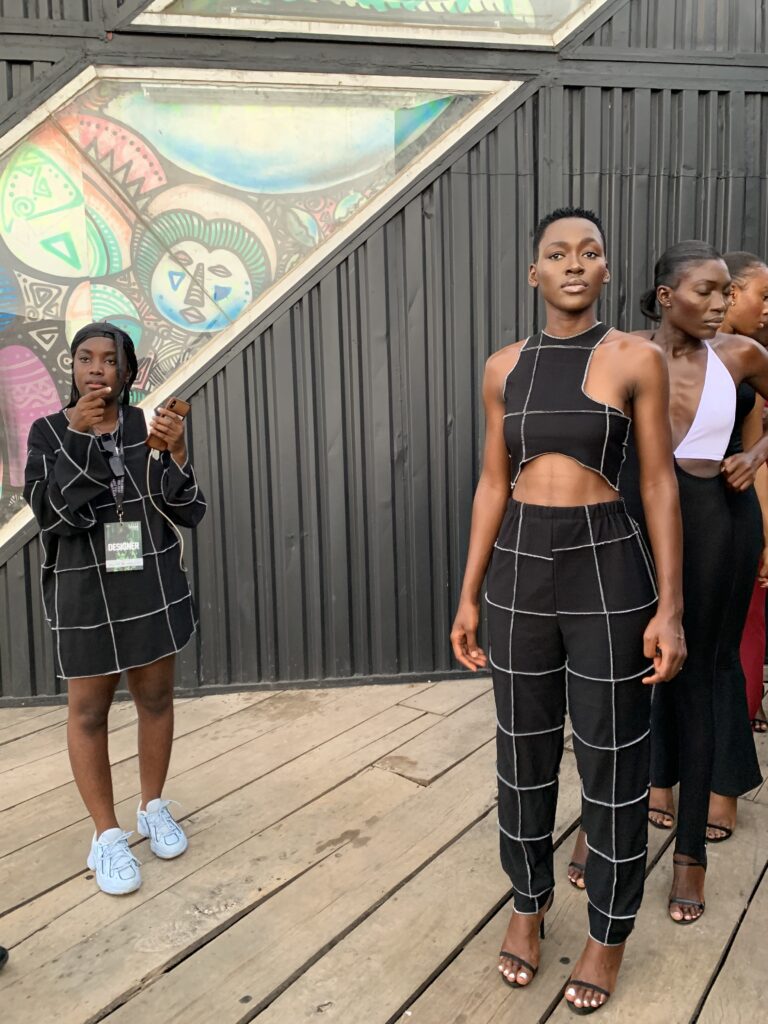What inspired you to pursue a career in fashion design?
I’ve always had a deep-rooted love for fashion and art. From as young as 7 years old, I was sketching out my company building with the name “Darcent Designs,” telling my godmother that I was going to be a fashion designer. I always found joy in expressing myself through clothing and simply thinking about designs. The mere thought of being able to turn my idea into a reality inspired me to pursue a career in fashion design.
Can you tell us about your creative process and how you come up with new design concepts?
My creative process starts with gathering inspiration from my personal experiences, as well as sources such as nature and art. I create mood boards, daydream (which is a very important part of the process), sketch ideas, and then begin to experiment.Usually, the designs, or their concepts, just come to me. Divine ideas come to me daily.
I also like to use fashion as my art form to heal. The way artists can express their emotions and heal through songwriting and music, I express myself through my designs, as well as what I wear day to day.
How would you describe your signature style as a fashion designer?
I’m a storyteller. I embrace my individuality, as best as I can. I aim to create garments that not only adorn the body but also serve as a means of self-discovery, empowerment, and catharsis.
Hubert de Givenchy once said ‘The dress must follow the body of a woman, not the body following the shape of the dress’ and that stuck with me. With that in mind, I strive to create pieces that flatter and enhance the natural beauty of the wearer, rather than overpowering or restricting them. By combining artistic expression with wearable fashion, I strive to create a signature style that is both visually captivating and deeply meaningful.
What materials and techniques do you enjoy working with the most?
I enjoy working with a wide range of materials, but I have a particular affinity for lycra. Its stretchy and form-fitting nature allows me to create designs that beautifully accentuate the body and offer comfort and flexibility. Lycra also offers endless possibilities for experimenting with different textures, prints, and colours, adding a dynamic element to my designs. It’s a versatile material that allows me to bring my creative vision to life and create garments that empower individuals to feel confident and stylish.
How do you stay updated with the latest fashion trends and incorporate them into your designs?
Staying updated with the latest fashion trends is important to understand the evolving preferences and tastes of consumers. While I appreciate the creativity and innovation that trends can bring, I strive to maintain my individuality and unique design perspective. I stay connected with the fashion industry by attending fashion shows, following influential designers and brands on social media, and engaging with fashion communities but rather than simply replicating trends, I use them as sources of inspiration to infuse my designs with a fresh and contemporary touch. I believe in incorporating elements of current trends in a way that aligns with my personal aesthetic and brand identity. This allows me to create designs that are not only relevant but also authentic to my creative vision.
Ultimately, my goal is to create timeless pieces that transcend fleeting trends and offer enduring appeal to fashion enthusiasts who appreciate the intersection of style, individuality, and self-expression.
Can you share some details about your latest collection and the inspiration behind it?
My latest collection, ‘Love Didi’ for Swimsbydidi, is a carefully crafted consistent collection that aims to empower individuals and promote self-confidence. Each piece is designed to help you feel more comfortable in your skin, and allow for a slow transition towards embracing your body, in hopes of transitioning into the original ‘dikini’.
The inspiration behind this collection stems from my journey with body dysmorphia. I wanted to create a collection that helps customers who are not yet fully comfortable in their skin, start the journey to get there. It was a transformative moment for me, and I wanted others to feel the same sense of liberation and self-acceptance I did when I first wore my dikini.
‘Love Didi’ features a range of thoughtfully designed pieces that flatter various body types and offer a comfortable fit. From figure-enhancing cuts to supportive designs, every detail has been carefully considered to ensure that individuals feel confident and beautiful in their swimwear.
Through this collection, I aim to break down the barriers of traditional beauty standards and encourage individuals to embrace their bodies just as they are. It’s about promoting self-love, body positivity, and celebrating the unique beauty of every individual.
Ultimately, ‘Love Didi’ is not just a collection of swimwear; it’s a testament to the transformative power of embracing oneself and finding confidence in your skin.
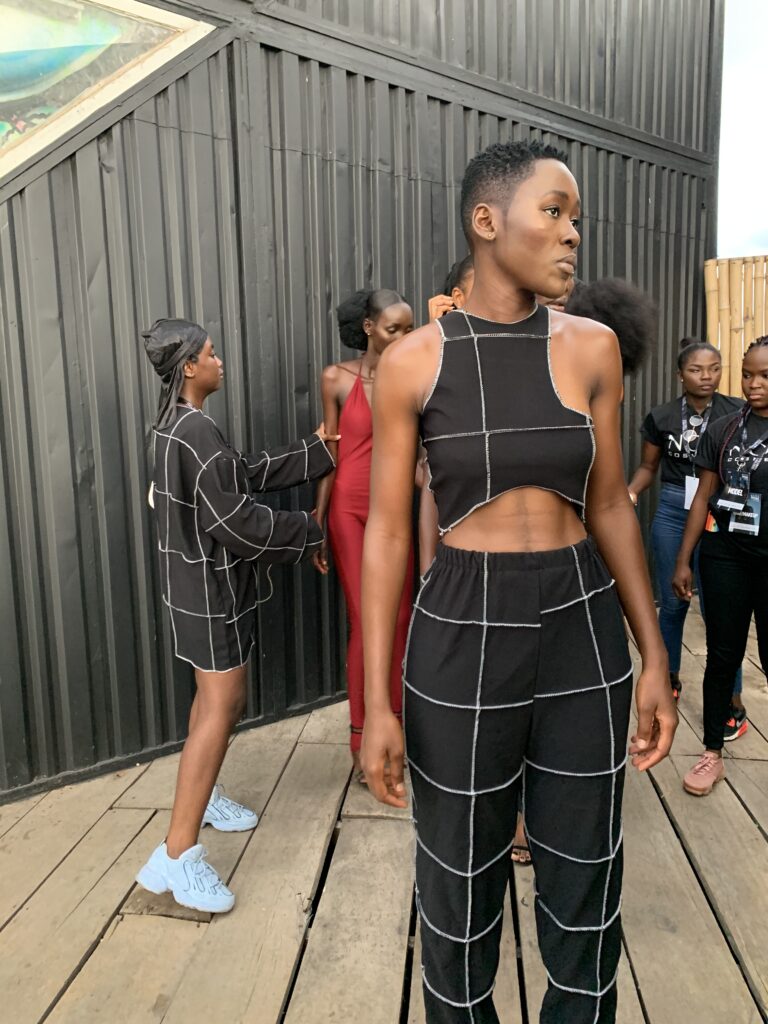
What challenges have you faced as an emerging fashion designer, and how have you overcome them?
As an emerging designer in Ghana, I encountered my fair share of challenges, especially when it came to finding the right production partners and balancing my creative vision with the demands of running a business.
In the early stages, sourcing reliable and skilled manufacturers or artisans proved to be a daunting task. However, I was determined to find the right partners who could bring my designs to life with impeccable craftsmanship. To overcome this challenge, I immersed myself in the local fashion community, networked, and connected with fellow designers. Through these interactions, I discovered reputable production partners who shared my passion for quality and attention to detail. Building these relationships was crucial in ensuring the smooth production of my designs and delivering the highest standard of workmanship.
Additionally, as a creative individual, it was essential for me to strike a balance between my artistic vision and the practical aspects of running a business. While I wanted to let my creativity soar, I also needed to consider the commercial viability of my designs. To overcome this challenge, I actively sought opportunities to enhance my business acumen. I attended online workshops and courses on fashion entrepreneurship, learning about budgeting, marketing strategies, etc. This knowledge helped me understand the needs and preferences of my target audience, enabling me to develop designs that were not only visually compelling but also aligned with market demands. By striking this balance, I was able to maintain my creative integrity while ensuring the success and sustainability of my brand.
Are there any specific fashion designers or brands that have influenced your work?
Kidsuper. Their distinctive style blends streetwear, pop culture, and playful graphics to create vibrant and energetic designs. I admire their ability to create clothing that is both fashion-forward and accessible, appealing to a younger generation of fashion enthusiasts.
Kidsuper’s emphasis on storytelling and narrative-driven designs resonates with me as a designer who values the power of storytelling in fashion. Their bold use of colours, imaginative patterns, and unconventional silhouettes inspires me to push the boundaries of creativity and create pieces that tell a unique story. Their innovative approach to fashion encourages me to experiment with unconventional materials and techniques, constantly seeking new ways to express my ideas and connect with my audience.
I could say the same about Moschino, also known for its playful and whimsical designs, showing me the importance of injecting fun and humour into fashion. They inspire me to experiment and think outside the box.
How do you approach sustainability and ethical practices in your designs and production processes?
I try to create timeless designs that promote conscious consumption and reduce fashion waste. I’m also trying to look into the use of eco-friendly materials, engage in responsible sourcing, and collaborate with artisans who uphold ethical standards. Overall, my approach to sustainability and ethical practices is an ongoing journey of continuous improvement. I am dedicated to learning and staying informed about the latest advancements in sustainable fashion and implementing them into my designs and production processes. By making conscious choices, I hope to contribute to a more sustainable and ethical fashion industry.

What role do you think fashion plays in expressing one’s individuality and identity?
Fashion plays such an incredible role in expressing who we are as individuals and showcasing our unique identities. It goes way beyond just wearing clothes – it’s about making a statement and telling the world who we are without saying a word.
Think about it, when you choose what to wear each day, you’re making a conscious decision about how you want to present yourself to others. Your outfit becomes a canvas where you can paint your personality, your interests, and your values. It’s like wearing your brand!
For me, fashion is all about embracing my individuality and celebrating what makes me, well, me! I love exploring different styles, experimenting with various looks, and mixing and matching pieces to create something truly unique. It’s like putting together a puzzle that reflects my personality and expresses my mood for the day.
But fashion isn’t just about expressing ourselves – it’s also a way to connect with others. When we see someone rocking a particular style or wearing something that resonates with us, it creates an instant connection. It’s like finding a kindred spirit, someone who shares our sense of style or our outlook on life. Fashion becomes a language that brings people together, transcending barriers and fostering a sense of community.
And let’s not forget the cultural aspect of fashion. It’s a beautiful way to honour our heritage and showcase our roots. By incorporating traditional garments, ethnic prints, or cultural symbols into our outfits, we pay homage to our background and share a piece of our identity with the world.
It’s like wearing our hearts on our sleeves (quite literally!).
The beauty of fashion is that there are no rules – it’s all about embracing who we are, having fun, and letting our creativity shine. Embracing your individuality, as I like to say.
Can you share a memorable moment or achievement in your career so far?
One of the most memorable moments in my career so far was when I showcased my designs at the Glitz Africa Free Street Show, my first-ever fashion show. It was an exhilarating experience to see my garments come to life on the runway. Little did I know that this experience would open up an incredible opportunity for me.
After the Glitz Africa show, my work caught the attention of industry insiders, and I was fortunate enough to be featured in an article by Vogue Business. I still get goosebumps thinking about it! Being recognized by such a renowned publication was a true honour and a dream come true. It was a testament to the hard work and dedication I had poured into my craft.
Another incredible achievement that I’m proud of is winning the Swimwear Brand of The Year at the Young Designers Award and the Ghana Tertiary Fashion Awards, as well as the New Fashion Brand of the Year at the Ghana Tertiary Fashion Awards. It was an honour to be acknowledged among a pool of talented designers, and it served as a validation of my hard work and passion for my craft.
These moments of success have not only boosted my confidence but have also opened doors to new opportunities and collaborations. They have allowed me to connect with industry professionals, expand my network, and gain valuable exposure within the fashion community.
However, I understand that success in the fashion industry is an ongoing journey, and I remain committed to pushing boundaries, refining my skills, and creating even more memorable moments in the future.
How do you balance creativity with commercial viability in your designs?
Finding the balance between creativity and commercial viability is crucial in the fashion industry. While I prioritize artistic expression and innovation in my designs, I also consider market trends, consumer preferences, and practicality. By understanding the needs and desires of my target audience, I create designs that are both visually captivating and commercially appealing, ensuring a balance between creative vision and business sustainability.
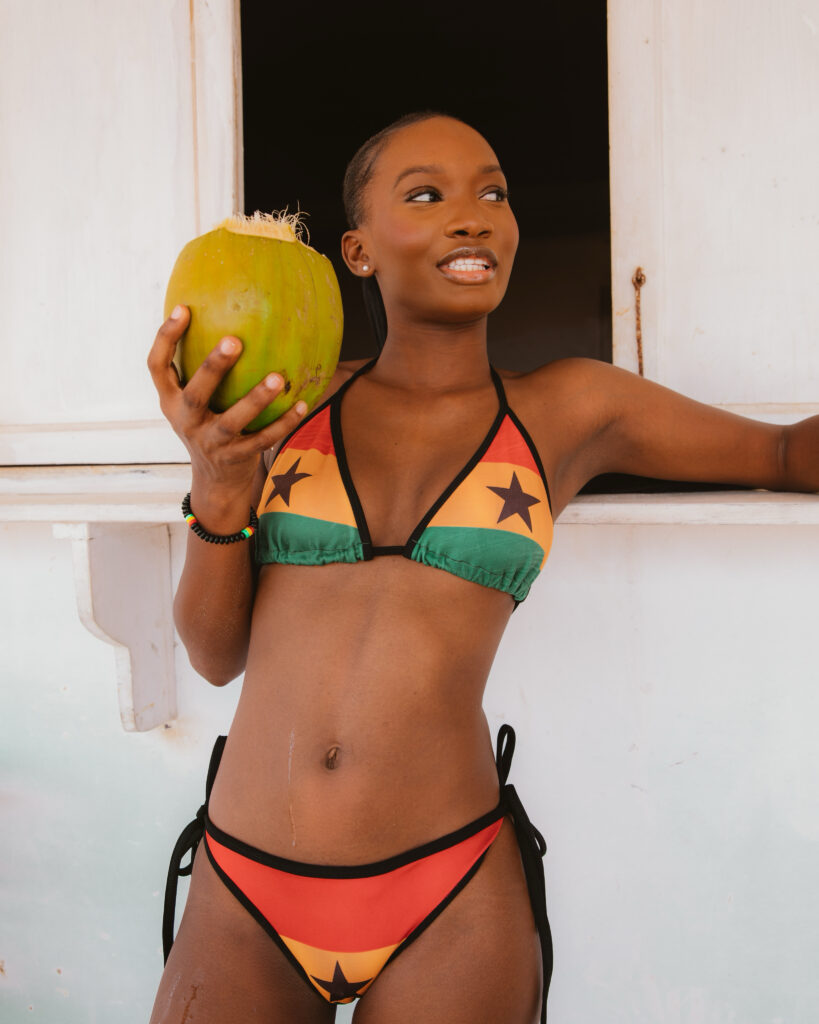
Could you talk about the importance of storytelling in fashion and how you incorporate it into your designs?
The importance of storytelling in fashion cannot be overstated, especially for me as a designer who draws inspiration from my struggles and emotions. I firmly believe that fashion goes beyond aesthetics and becomes a powerful medium for self-expression and healing.
Incorporating storytelling into my designs is at the heart of my creative process. I draw upon my personal experiences, the challenges I’ve faced, and the emotions I’ve navigated to create garments that truly resonate with me and would hopefully resonate with others. These struggles and emotions serve as the foundation of my designs or rather the reason behind my designs, allowing me to infuse each piece with a unique narrative and a deep sense of authenticity.
Each garment becomes a vessel for self-expression, as I translate my journey into wearable art. I strive to invite others to connect with the narrative behind the design, especially if they can relate. Fashion becomes a means for them to not only express their style but also to connect with their own stories and experiences. I believe that by wearing a piece of clothing that reflects their struggles and triumphs, individuals can find solace, strength, and a sense of belonging.
Ultimately, the importance of storytelling in fashion lies in its ability to create meaningful connections and spark conversations. I am passionate about using my designs as a platform for dialogue, inviting others to share their own stories and fostering a sense of empathy and understanding.
Through my garments, I aspire to contribute to a fashion industry that values individuality, authenticity, and the transformative power of personal narratives. By intertwining fashion and storytelling, I hope to leave a lasting impact, inspiring others to embrace their journeys and find healing and empowerment through the clothes they wear.
What advice do you have for aspiring fashion designers who are just starting their journey?
I would say stay true to your unique vision and voice. Embrace experimentation, take risks, and continuously refine your skills. Don’t be afraid to fail. Be so confident in God’s plan that you don’t get upset when things don’t go your way.
Lastly, have faith and confidence in yourself and your ideas.
How do you use technology and digital tools in your design process?
Technology and digital tools have become integral to the modern fashion design process. I use computer-aided design (CAD) software to create digital sketches and renderings, enabling me to visualize and refine my designs more efficiently. Additionally, I utilize digital platforms and social media to connect with my audience, showcase my work, and gather inspiration from online fashion communities.
Can you share any collaborations or partnerships you have been involved in and how they have influenced your work?
While I don’t have any specific collaborations to share at the moment, I am actively exploring opportunities for meaningful partnerships that align with my creative vision and values. I believe that collaborations have the potential to bring fresh perspectives, innovative ideas, and new avenues for creativity. I’m excited about the possibilities that lie ahead and look forward to sharing upcoming collaborations. Stay tuned!

How do you handle criticism or negative feedback on your designs?
Constructive criticism and negative feedback are valuable sources of insight and growth for me as a designer. I believe in approaching them with an open mind and using them as opportunities for improvement. While it can be challenging to receive criticism, I remind myself that it is an integral part of the creative process.
When faced with criticism, I take a step back and objectively evaluate the feedback. I consider the perspective of the critic and try to understand their viewpoint. I ask myself if there are any valid points or areas where I can enhance my designs or approach. This helps me identify areas of improvement and refine my creative vision.
It’s important to note that not all feedback will align with my personal style or design philosophy. In those instances, I trust my instincts and stay true to my artistic vision. However, I still appreciate the feedback and view it as an opportunity to gain a deeper understanding of how my designs are perceived.
Ultimately, I believe that criticism is an essential aspect of growth and development. It pushes me to continually evolve, experiment, and elevate my work. By embracing feedback, I strive to create designs that not only resonate with my audience but also reflect my unique creative expression.
What do you think is the future of fashion, and how do you see yourself contributing to it?
The future of fashion holds great potential for sustainability, inclusivity, and technological advancements. I see myself contributing to this future by further integrating sustainable practices into my design process, continuing to embrace diverse body types in my designs, and leveraging technology to enhance the fashion experience. Additionally, I aim to promote conscious consumerism and advocate for a more ethical and inclusive fashion industry through my work.
Fashion has a huge role in promoting diversity and inclusivity. It’s all about embracing and celebrating differences! Fashion should be for everyone, regardless of their body shape, size, ethnicity, gender, or identity.
By designing clothes that cater to different body types, fashion can make people feel seen and confident. It’s about breaking those unrealistic beauty standards and embracing the beauty of diversity. We want everyone to feel comfortable and proud in their skin.
Fashion also has the power to showcase and honour different cultures. By incorporating elements from various backgrounds, we can create designs that celebrate and respect traditions. It’s about giving a voice to those who have been underrepresented and letting them shine.
Gender norms? Fashion can challenge and redefine what’s considered “normal” by offering gender-neutral styles and embracing individuality. It’s about breaking free from labels and allowing people to express themselves authentically.
Representation matters, and fashion can make a difference by featuring models and individuals from diverse backgrounds and identities. By showcasing real people with real stories, we inspire others to embrace their uniqueness and feel a sense of belonging.
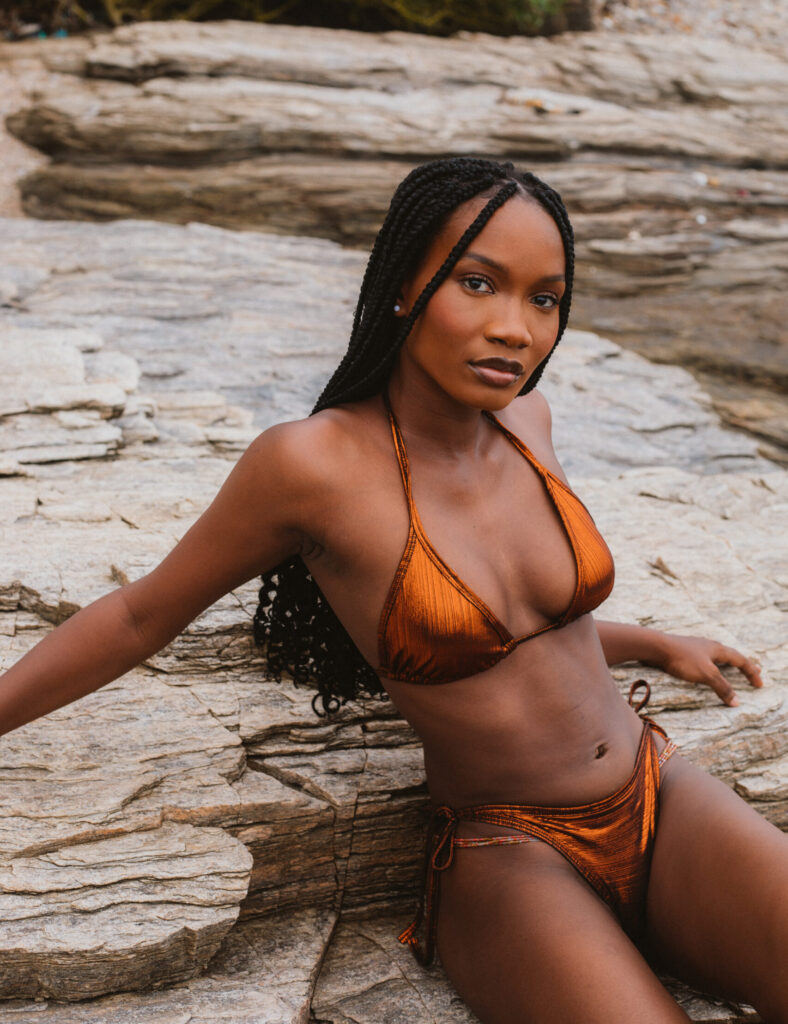
Inclusivity and body positivity are at the core of my brand. I believe that fashion should be accessible to all, regardless of body type or size. That’s why I offer an extensive range of sizes that cater to diverse body types. From petite to plus size, I strive to ensure that everyone can find garments that fit them perfectly and make them feel confident.
I also understand that the standard sizing system doesn’t always accommodate the wide range of body types out there. That’s why I’ve shifted to a made-to-order model. This allows me to create garments that are tailored to each individual’s specific measurements, ensuring a perfect fit and eliminating the frustration of trying to fit into a standard size.
Moreover, I actively seek feedback from my customers and engage in conversations about their needs and preferences. This helps me continually improve and expand my size offerings, ensuring that I can better cater to the diverse range of body types that exist.
Inclusivity goes beyond just size. It’s about creating an environment where everyone feels welcome and represented. I hope to inspire confidence and empower individuals to embrace their bodies and celebrate their unique beauty.
Fast fashion and the lack of diversity! But then again, these challenges are also opportunities. We can tackle environmental issues by promoting sustainability and responsible consumerism. And by embracing diversity, we can create a more inclusive industry that celebrates people of all body types, ethnicities, and identities. Plus, with the rise of technology and social media, designers have new opportunities to connect with their audience and make a positive impact. It’s all about innovation, creativity, and making a difference in fashion.
How do you envision your brand evolving in the next few years?
In the next few years, I see my brands reaching new heights. I want to take Swimsbydidi and DarkorDorte beyond borders and make a mark on the international fashion scene. I also have plans to expand our product range, introducing new categories and exploring new markets. Embracing technology will be crucial too, as we integrate digital tools and platforms to enhance the customer experience and streamline our operations. The future looks bright, and I’m excited to see my brands evolve and leave a lasting impact on the fashion industry.
Can you share any personal fashion philosophies or mantras that guide your work?
One of my guiding fashion philosophies is that fashion should empower and uplift individuals. I believe in designing with intention and authenticity. I value quality over quantity and strive to create timeless pieces that transcend trends. My mantra is to create fashion that tells a story, fosters connection and makes people feel confident and empowered.
How do you connect with your target audience and build a strong brand identity?
I use social media platforms, such as Instagram and Twitter, to share my design process, inspirations, and behind-the-scenes moments. I engage with my followers, respond to their comments and messages, and seek their feedback. Providing exceptional customer service and delivering high-quality products are also key elements in building a strong brand identity. By consistently delivering on my brand promise, I aim to create a loyal and passionate community of supporters who resonate with my vision and values.
Finally, what message or feeling do you hope people experience when they wear your designs?
When people wear my designs, I want them to feel empowered, confident, and authentically themselves. I hope my designs evoke a sense of joy, individuality, and connection to their narratives. By wearing my designs, I want individuals to feel like they are embracing their unique style and expressing themselves with confidence. I aim to create garments that make people feel seen, celebrated, and inspired. I want my designs to be a catalyst for self-expression and a reminder that fashion is a powerful tool for personal empowerment.

